
|   |

|   |
Pranitwa Festival of Art and Nature - Nita Vidyarthi e-mail: nitavidyarthi@gmail.com Photos courtesy: Jalsa Chandra January 12, 2021 Pranitwa Festival, an endeavour by Jalsa Chandra Performing Troupe and IC Care, was an ambitious project relating Art and Nature. It germinated from the thought of "Dance for a Cause to generate a social awareness through the words of veteran artistes, to tell the mass that, yes, artistes too have a social message to convey through their respective art form" according to senior Bharatanatyam and Kathak dancer Jalsa Chandra. Jalsa has always had concern for stray animals and street dwellers and has been empathetic to the poor. This concern took a larger dimension during the lockdown period when she was caring for them by cooking herself, carrying food and feeding them sometimes with a small group of friends and providing daily necessities to the Umphan struck people. By her own admission, the Pranitwa Festival was inspired by her observation of the improved freshness of the environment during the lockdown. Season one commenced with the planting of saplings on some streets of North Kolkata in presence of the councilor of the ward and members of Kolkata Corporation. The two online seasons of the performance, interviews and conversation segments of Pranitwa 1 and then Pranitwa 2, followed later. 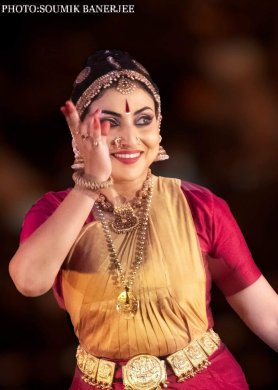 Jalsa Chandra Prantiwa 1 was a weeklong event comprising of interviews by Jalsa's teachers, Dr. Thankamani Kutty, Rama Vaidyanathan and Pandit Rajendra Gangani and distinguished dance gurus Chitra Visweswaran, Aloka Kanungo and Piyal Bhattacharya, research scholar and re-constructor of Natyashastraic tradition, who also spoke of the swaras, ragas, and details of the development of the instruments from nature. There was also a long list (seventeen!) of well-known people from the city from all walks of life offering good wishes and their views on the project. Performances by senior seasoned artists from the city were home videos of elevated standard, quality and execution embracing the theme of the festival. Arnab Bandopadyay is an aesthetically aware, consummate Odissi dancer with skilled dancing, excellent control and deep understanding of the art form together with a fine sense of costumes. His excerpts from the production 'Ananta' (the infinite) based on the Vedas and Upanishads, showed a dancer of high calibre with pin-point adherence to crisp nritta and nritya, music and artistry with movements like caressing plants and use of clay vessels. 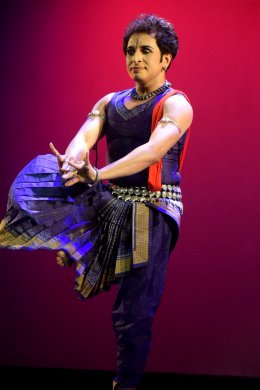 Arnab Bandopadyay 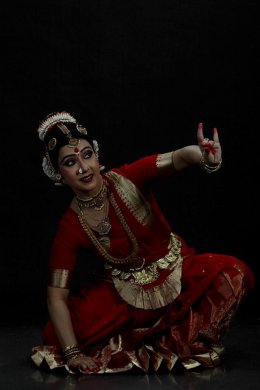 Jhinuk Mukherjee Sinha 'Rituranga' (the cycle of seasons) through songs of Tagore presented by graceful Bharatanatyam dancer Jhinuk Mukherjee Sinha had flourishes of strong, well-blended nritta and nritya passages set to appropriate songs. The dancer has a sprightly presence and some of the lovely sways in the number "Phagun hawaye hawaye" were a real pleasure to view. Kush Kushari s presentation had an interesting start but got disturbed due to technical glitches. It was a pity that well known Odissi dancer Rina Jana could not connect. Pranitwa 1 wrapped up with 'Vrikkhani' (the beginning) by the troupe followed by 'Vritti,' a fine Bharatanatyam recital choreographed by Jalsa Chandra on Mother Earth with song composition and vocal rendition by Ranganathan Srinivasan supported by Shankar Narayanswamy's mridangam. The concluding dance production by the troupe entitled 'Child Mind, Nature and Tagore' dotted with recitations, narration and visuals was conceived and choreographed by Jalsa Chandra but it did not rise above mediocrity except for Jalsa's solo. Jalsa is a very confident dancer with a solid training and her execution with the poem "Jagath parabarer teerey" was impressive. Her opening number set to the song "Nach Shyama taley taley" is a "natyageeti" from the natya- kavya collection 'Bhagna Hriday' (The Broken Heart), basically love poems, written partly in London and way back when Tagore was only eighteen - "neither in my childhood nor in my youth" wrote the polymath in 'Jibansmriti' (My reminiscences). His outpourings of emotions were significant for it was addressed as "Srimati He"- when translated in English it meant 'for Lady He'. 'He' stood for Hecate, the name he had given to Kadambari Devi (his sister-in-law). This song (dance Shyama with rhythm) sequence placed in the second Canto of the collection was in a garden where a frivolous maiden Nalini, frolicking with her Sakhis while dressing up with flowers for a wedding, wakes up her sleeping pet bird Shyama (a species) in a joke. It was totally inappropriate for the "child mind" even though there was mention of a bird in it. A better understanding of the work was desirable. Further, there was another factual error. After moving to Santiniketan, Tagore's "forest retreat" when he was about to turn forty, Tagore decided to start a school in the tradition of the Tapovan, the ancient forest ashrams (hermitage) dedicated to the principle of 'Brahmacharya', to train students in the solitude far from the disturbances and luxuries of Calcutta and thus "to lead them in the ways of the sacred and unsullied Indian tradition of poverty" in the words of the Bard. It was not to teach children in the midst of nature as mentioned in the narration. The nine-day Pranitwa 2 spanning 3 weekends was on the same format but witnessed better content with eminent critics, distinguished gurus and dancers offering interesting information about dance apart from speaking on the topic of the festival. Senior well-known disciples presented choreographies of their respective gurus. It was a great privilege to have witnessed the erudite, illustrious and respected Dr. Sunil Kothari in conversation with Jalsa Chandra. Among others, his discussion on the distinguished dancer Chandralekha's luminous work, especially 'Sharira,' an important aspect of nature - the human body - and shifting attention from the mundane discussions and presentations of the botanical and zoological world to that of the great dancer was highly enriching. 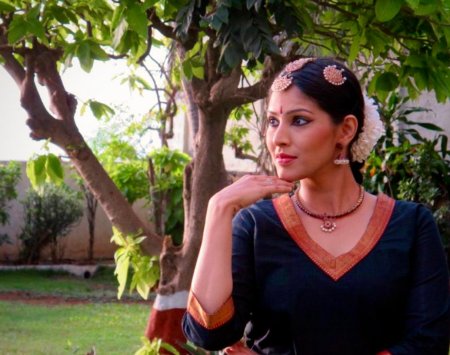 Prachi Saathi 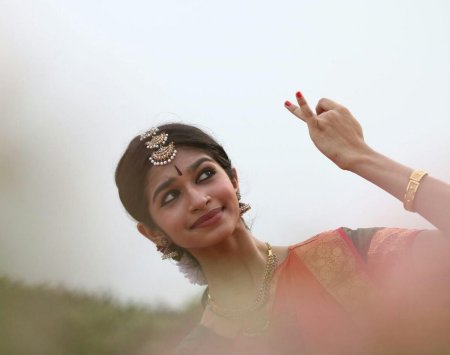 Kavya Ganesh There were interviews of gurus Uma Banerjee, Parwati Dutta, Prof Dr. Mahua Mukherjee, critics Manjari Sinha, Tapati Chowdhurie and others. Lecture demonstrations on Gaudiya Nritya by Mahua Mukherjee and her son Ayan and disciple Satabdi Acharya showcased the revived dance form of Bengal. There was some good dancing either in a garden, or with an artistic backdrop using interesting performance text. Rama Vaidyanathan's innovative Bharatanatyam choreography and popular numbers were presented by her competent dancers. Prachi Saathi's 'Vrikshanjali' emulating the lessons learnt from the tree, Uma Govind's touching 'Lament of the Birds' bore the stamp of their guru and Kavya Ganesh's Tillana set to ragam Amritavarshini based on Valmiki Ramayan poetry about the rain cycle were all quality performances. 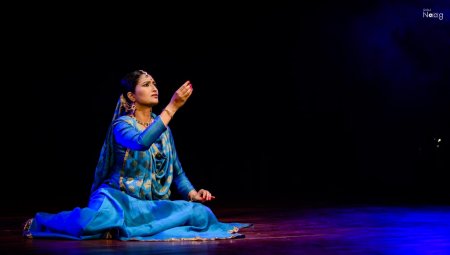 Swati Sinha Swati Sinha, disciple of Rajendra Gangani, is a seasoned Kathak dancer with a strong hold on nritta. She etched with intensity the influence of nature through the eyes and movements of a nayika with imageries like dressing up in all her finery, concept of taal, paramelu, sounds of animals and the like. The Tarana and depiction of storm were captivating. Trained with Bharatanatyan stalwart Chitra Visweswaran and presenting a stunning Thevaram was Uma Satyanarayanan extolling the beauty of nature of Tiruvannamalai through "Ardhanareeswar" with music from Nattapadai Pann from the Odhuvar Sampradaya. Nandini Ganesan, a strong dancer, presented the 'Panchabhuta Alarippu' in 3 talas and 5 ragas forming the complete whole of the primordial Shiva with great intensity. 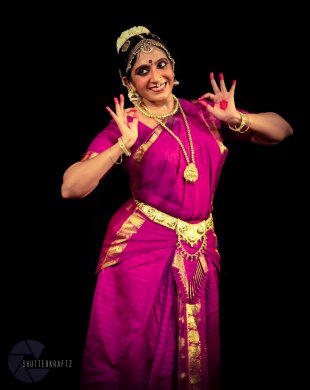 Uma Satyanarayanan Kolkata's Bharatanatyam dancer Samrat Dutta's "Parama Prakriti" was striking with explosive physicality while ensuring aesthetics of a stunning performer demonstrating the sattva, raja and tama guna embracing Devi Bhairavi, the goddess of summer. Odissi dancers Sriparna Bose performed with music from Aloka Kanungo's collection and Paulami Chakravarty, Kanungo's student, offered a pleasing ashtapadi "Lalita lavanga lata". The bandishes by young dancer Sayari Bhunia and a piece set to Nazrul geeti by Oishiki Ghosh, both in Kathak idiom, showed good training by Sandip Mallik. Laya Vinayas under the guidance of renowned mridangam player Shankar Narayanswamy delighted with their scintillating instrumental ensemble "As rhythm embraces the flow of Nature." 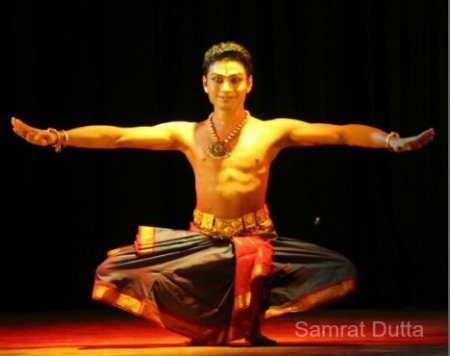 Samrat Dutta 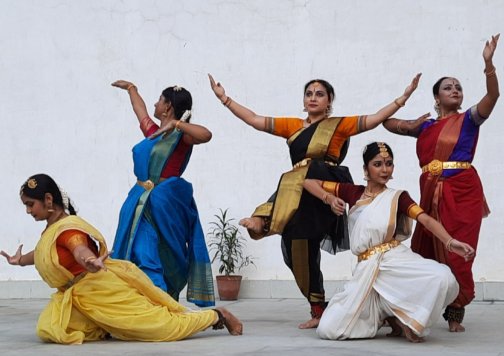 Jalsa Chandra Performing Troupe The concluding Bharatanatyam presentation of margam items by Jalsa Chandra Performing Troupe more than compensated for all their shortcomings in the first one and deserves all the praise for training, execution and teamwork. Performed at the Rangamancha of EZCC, the bouquet conceptualized by Jalsa, began with a 'Vriksha Alarippu' in ragam Hamsadhwani, set to shloka from Bhagawad Geeta in talam adi followed by a sharpened Jatiswaram choreographed on monsoon (ragam Mohanam, misra chapu). Ragam Sahana based 'Gaja Kauthwam' composed by Ranganathan Srinivasan came through well with the choreography in adi talam. Jalsa Chandra's solo set to Muthuswamy Dikshitar's famous 'Mayura Keertanam' (ragam Dhanyasi, misra chapu) saw stylised movements with a skilful combination of technique, training, grace and understanding of the dance form. The concluding 'Panchabhoota Tillana' composed by Ranganathan Srinivasan was bright and energetic. There has been a long tradition of work about nature with vegetation and paleo botanical worlds but there should be a new moment to feel about drawing out the effectiveness of art to a much broader frame of natural systems, living systems, rethinking structures to be beyond patterned practice, without losing the effectiveness of art with any lens chosen. 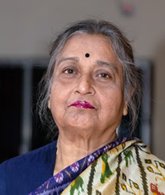 Dr. Nita Vidyarthi is a veteran critic of performing arts and writes on dance, music and theatre in leading publications. |